As an Amazon Associate I earn from qualifying purchases.

Corning venison began as one of those, “why not?” experiments that turned out far better than I had expected. I don’t know why I was so worried — I like corned beef, and how different is venison, anyway?
Corning venison at home is so good in fact that any deer hunter out there really ought to learn this technique — you will get far more enjoyment out of the leg roasts from your venison.
I typically use whole-muscle roasts from the hind leg to do this. Big sirloin roasts, rump roasts, the “football roast,” and such. But any big hunk of venison will work. The advantage of the whole-muscle roasts is less sinew and connective tissue, which takes hours to break down. I suppose you could use the backstrap, but why would you?
Lovers of hash might want to corn shoulder or neck roasts, then simmer them so long they begin to fall apart. The extra connective tissue in these cuts makes for a moister hash.

The technique is simple: Brine your meat, then simmer it into tenderness. It takes several days, but it isn’t labor-intensive at all. Once made, corned venison is great hot or cold, with root vegetables, cabbage, cold in sandwiches (how I eat most of my corned venison), or chopped into hash.
A word on nitrites. I use them, for color, for flavor and for safety. Can you do this without pink salt? Yes, but your meat will be gray, you will lose some flavor, and there is an ever-so slight chance you might pick up botulism — not a large chance, but as botulism is one of the most toxic substances known to man, I’d say use the nitrite. You can buy it online here at The Sausage Maker.
Once made, you can keep corned venison in the fridge for a couple weeks, or freeze it for a year.
Corned Venison
Ingredients
- 1/2 gallon water
- 1/2 cup kosher salt
- 1/3 cup sugar
- 1/2 ounce Instacure No. 1 (sodium nitrite)
- 1 tablespoon cracked black pepper
- 1 tablespoon toasted coriander seeds
- 6 bay leaves, crushed
- 1 tablespoon mustard seeds
- 1 tablespoon dried thyme
- 1 teaspoon caraway seeds
- 1 cinnamon stick
- 5 chopped garlic cloves
- A 3 to 5 pound venison roast
Instructions
- Add everything but the roast to a pot and bring it to a boil. Turn off the heat and cover, then let it cool to room temperature while covered. This will take a few hours. Meanwhile, trim any silverskin you find off the roast. Leave the fat. Once the brine is cool, find a container just about large enough to hold the roast, place the meat inside and cover with the brine. You might have extra, which you can discard.
- Make sure the roast is completely submerged in the brine; I use a clean stone to weigh the meat down. You can also just flip the meat every day. Cover and put in the fridge for 5 to 7 days, depending on the roast's size. A 2-pound roast might only need 4 days. The longer you soak, the saltier it will get -- but you want the salt and nitrate to work its way to the center of the roast, and that takes time. Err on extra days, not fewer days.
- After the alloted time has passed, you have corned venison. To cook and eat, rinse off the meat, then put the roast in a pot just large enough to hold it and cover with fresh water. You don't want too large a pot or the fresh water will leach out too much flavor from the meat -- it's an osmosis thing. partially cover the pot and simmer gently -- don't boil -- for at least 3 hours and up to 5 hours. The meat itself will be cooked in an hour or less, but you want the sinews and connective tissue in the roast to soften and that takes time.
- Eat hot or cold. It is absolutely fantastic with good mustard and some sauerkraut on a sandwich.
Notes
Nutrition
Nutrition information is automatically calculated, so should only be used as an approximation.

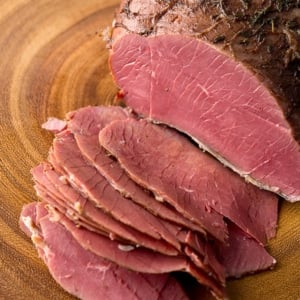
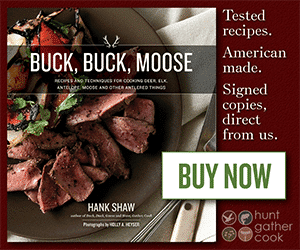

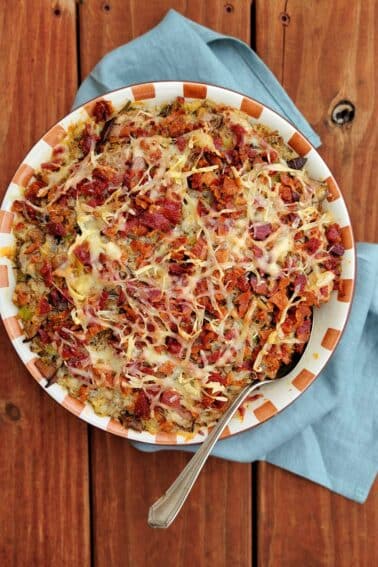

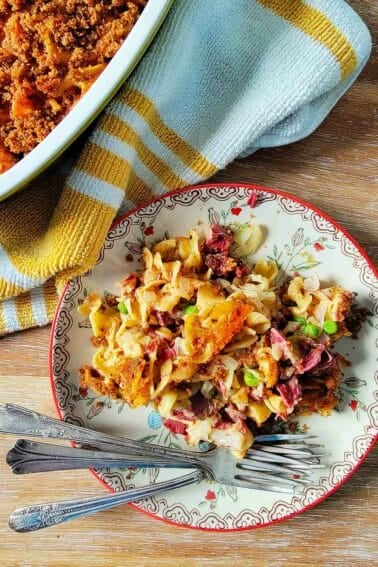
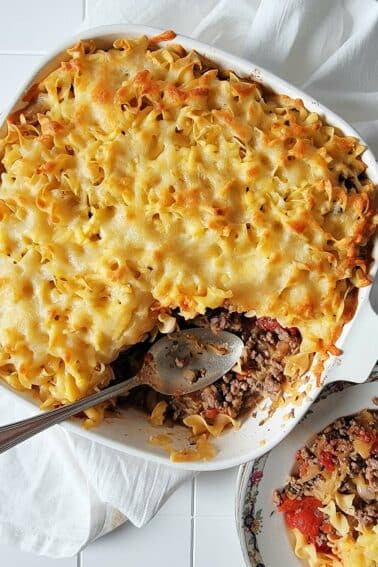
Works great! Just as advertised! Love using it in sandwiches with homemade kraut.
Could you recommend a time/temperature scenario to cook the meat sous vide instead?
Also, have you tried this with large Canada Goose breasts?
Thank you.
Benjamin: Sure, do it at about 140F for 2 hours per pound of each piece. And yes, this works fine with Canada goose breasts.
Glad I came on down and read the comments! Was just about to ask about sous vide for the final cook. Can’t wait to try the recipe! Thanks for always sharing your knowledge!
This recipe is amazing; I’ve made this with most of my moose roasts.
Another great recipe by Hank Shaw.
So good! After making the corned venison, we had a good ole corned beef and cabbage dinner. Everyone loved it (including the kids)
So fucking good
I’ve made it twice. Just came here to make it again!
I left mine in the brine for 2 weeks. Rinsed and slow cooked per directions for about 3 hours. It’s fantastic.
Made this with two 2.5lb venison leg roasts and came out fantastic
Definitely doing it again!
Hank, the dry rub and then vac seal method worked perfectly. The venison roast was as good as all of the ones I’ve made using this brine. I’ll be essentially dry Corning a turkey for Christmas using this recipe as my base. This HD vacuum sealer has been a meat flavoring/preserving game changer for me.
Hank, I have made this numerous times and it always comes out delicious. However, the meat does tend to crumble, making it difficult to get thin slices for sandwiches. Any thoughts?
By the way, I have a number of your cookbooks and they are marvelous. Keep up the good work.
After it has been vacuumed sealed for the 5 days,can it be frozen? You mentioned the salt and Instacure by the weight of meat, does that mean more or less of those compared to the actual recipe?
Brenda: Yes, you can freeze the venison. It is best to freeze it after it has been cooked. I would not freeze it before then.
I made this a few years back with great results! What do you think about dry rubbing the roast thickly with all of the ingredients and then vacuum sealing it and letting the moisture in the meat and osmosis run it’s course?
Jake: That works. Measure out 2% salt by weight of the meat, then 0.25% Instacure No. 1 by the weight of the meat. Combine, rub into the meat, vac seal for 5 days in the fridge. That should work well.
Highly recommend this recipe.
I’ve made this recipe several times now and it’s one of the best (and easiest) things to do with a venison roast. It’s pure awesomeness no matter how you eat it but making it into hash is my favorite. Thanks, Hank.
Hi Hank,
This may have been asked before but do you have any suggestions on sous vide time and temp for corned venison? I’m using two 1 lb round roasts and I’m wondering 140 degrees for 24 or 48 hours (like a 5 lb brisket) or 8 to 10 hours at 178/180?
Is it ok to use this for a couple small 1.5 pound roasts or would the brine/cure need to be diluted?
Oregonian: The brine stays the same, but the time decreases. I suspect 3 days will be enough for those roasts.
Hi I am trying the recipe for the first time, but I’m not sure how much a half ounce of Prague powder is, I did one and a half teaspoons and am waiting for it to cool but the mixture isn’t pink, is this normal?
Lesley: You really need to buy a scale. It is very important when curing meats. And no, the mixture does not turn pink. You should be OK in this case.
This recipe is great and so easy. I live in an apartment so it allows me to do charcuterie without having to own a smoker. I give away corned roasts at Christmas along with homemade beer. Beats the heck out of a gift card.
I’ve made this twice now and LOVE the recipe. I’m curious, after curing and simmering a roast, would it be safe to can some cubes of it? Any thoughts on how it would hold up? Anyone tried this? Thanks,
Brett
Brett: I wouldn’t cook it. I would cure it and then pressure can it, which will then cook it. After all, pressure canning at 10 psi for 80+ minutes, which is what you need to do, will cook the venison.